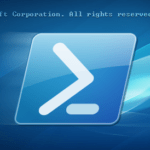Last week a friend asked: Is there an easy way to covert YAML to JSON and JSON to YAML without any online-services? As expected, my answer was: Yes, with PowerShell!
JSON is supported out of the box and there are a few PowerShell Modules that support YAML. My favorite Module is powershell-yaml, a wrapper on top of YamlDotNet.
You can install the powershell-yaml directly from the PowerShell Gallery:
Install-Module -Name powershell-yaml -Force -Repository PSGallery -Scope CurrentUser
Here are some examples to convert back and forth between JSON and YAML:
# Create a YAML Document (Source https://yaml.org/start.html)
$RawYaml = @'
---
invoice: 34843
date : 2001-01-23
bill-to: &id001
given : Chris
family : Dumars
address:
lines: |
458 Walkman Dr.
Suite #292
city : Royal Oak
state : MI
postal : 48046
ship-to: *id001
product:
- sku : BL394D
quantity : 4
description : Basketball
price : 450.00
- sku : BL4438H
quantity : 1
description : Super Hoop
price : 2392.00
tax : 251.42
total: 4443.52
comments: >
Late afternoon is best.
Backup contact is Nancy
Billsmer @ 338-4338.
'@
# Convert YAML to PowerShell Object
$PsYaml = (ConvertFrom-Yaml -Yaml $RawYaml)
# Convert the Object to JSON
$PsJson = @($PsYaml | ConvertTo-Json)
# Convert JSON back to PowerShell Array
$PsArray = @($PsJson | ConvertFrom-Json)
# Convert the Array to YAML
ConvertTo-Yaml -Data $PsArray
There is also a GIST for it.
Why JSON? JSON is well known as a serialization format. It is more explicit and more suitable for data interchange between your apis. I use JSON a lot to store data, where a database is oversized. I also use JSON a lot for configuration files.
Why YAML? YAML (YAML Ain’t Markup Language) is in my opinion best suited for complex configuration files. And it is much better human-readable for most.
